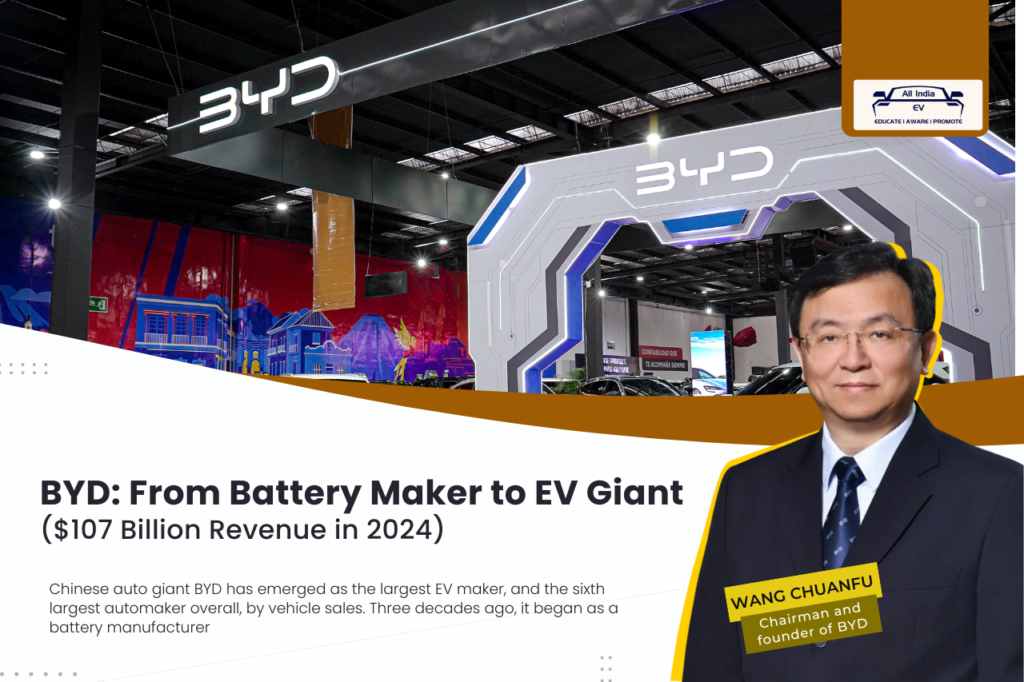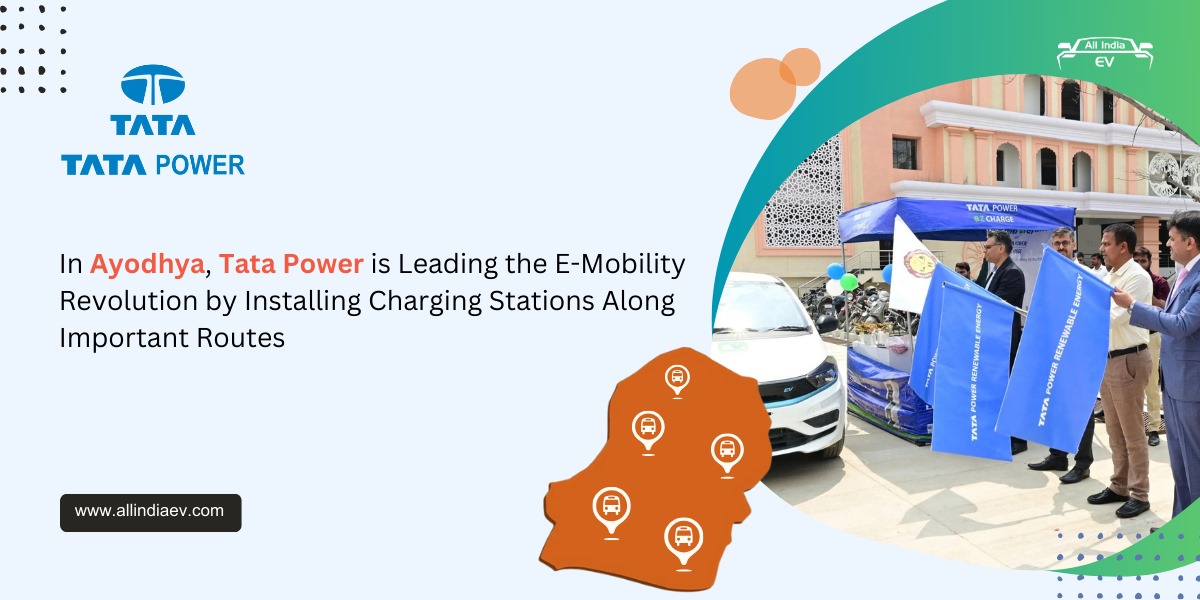
BYD: From Battery Maker to World’s Largest EV Brand & Sixth Biggest Automaker by Sales
In the ever-evolving landscape of electric vehicles (EVs), few companies have made as big an impact as BYD. From humble beginnings as a battery manufacturer, the Shenzhen-based automaker has now become the world’s largest producer of electric and hybrid vehicles, surpassing even Tesla in revenue and sales.
BYD’s Remarkable Growth
On March 24, 2024, BYD reported a staggering $107 billion in revenue, overtaking Tesla’s $97.7 billion. Selling 4.3 million EVs and hybrids, the company edged out Honda to become the world’s sixth-largest automaker by volume. This milestone solidifies BYD’s dominance in the EV market, a position once thought unassailable by legacy automakers.
From Batteries to Automobiles: The BYD Journey
BYD was founded in 1995 by Wang Chuanfu, a chemist who identified an opportunity to break Japan’s stronghold on the rechargeable battery industry. What started as a small operation with a $350,000 loan quickly scaled up, securing Motorola as a major client in 2000.
The company made its foray into the automotive sector in 2003 by acquiring the struggling Xi’an Qinchuan Auto Co. Despite initial skepticism from investors, Wang saw the potential for battery-powered vehicles. BYD launched its first car, the F3, in 2005, followed by the F3DM plug-in hybrid in 2008. That same year, Warren Buffett’s Berkshire Hathaway invested $230 million in the company, setting the stage for future growth.
Today, BYD manufactures both full-electric and plug-in hybrid vehicles, selling its models in over 95 countries, including India. Unlike many competitors, BYD has achieved the rare feat of making EVs profitable while maintaining affordability.
The Secrets Behind BYD’s Success
1. Strong Government Support
BYD’s rise has been aided by substantial backing from the Chinese government. Since 2009, Beijing has provided multiple subsidies to promote EV adoption. Between 2015 and 2020, the company received an estimated $4.3 billion in state support, helping it expand production and R&D at an unprecedented scale.
2. Innovation with the Blade Battery
A turning point for BYD came in 2020 with the launch of the Blade battery, a lithium iron phosphate (LFP) innovation. While LFP batteries were previously dismissed due to their lower energy density, BYD’s advancements made them safer, more efficient, and cost-effective. This innovation proved so successful that even Toyota adopted the technology in China.
3. Thriving Amid the Pandemic
When COVID-19 disrupted global supply chains, BYD adapted swiftly. It repurposed its smartphone production lines to manufacture N95 masks, becoming the world’s largest producer within weeks. This agility not only generated over $1 billion in revenue but also ensured that its factories remained operational while rivals struggled with supply shortages.
4. Aggressive Global Expansion
BYD has strategically expanded its footprint beyond China. In Southeast Asia, it commands a 43% market share in EV sales. The company customizes its approach for each region—introducing electric buses in London before launching passenger vehicles and offering tailored mobility solutions in different cities.
Challenges Ahead: India and the West
Despite its dominance, BYD faces hurdles in key markets. The U.S. and European Union have imposed high tariffs on Chinese EV imports—100% and 17%, respectively—aimed at protecting domestic automakers. These restrictions could hinder BYD’s growth in Western markets.
India, meanwhile, presents both an opportunity and a challenge. The Indian EV market is projected to grow from $3.21 billion in 2022 to $113.99 billion by 2029. However, BYD’s sales in the country remain modest, with a market share of just 3% in 2023. One major roadblock is the 110% import duty imposed on its vehicles due to the absence of a local manufacturing plant. While the Indian government is considering reducing these tariffs, no formal decision has been announced.
What’s Next for BYD?
As global demand for EVs surges, BYD is well-positioned to lead the charge. Its ability to innovate, scale production, and adapt to market dynamics has already disrupted the automotive industry. The key question now is whether it can navigate trade barriers and establish a stronger presence in critical markets like India and North America.
For Indian EV enthusiasts and stakeholders, BYD’s story offers valuable insights into the future of sustainable mobility. Whether through domestic partnerships, localized production, or continued innovation, its next moves could redefine the EV landscape in India and beyond.









